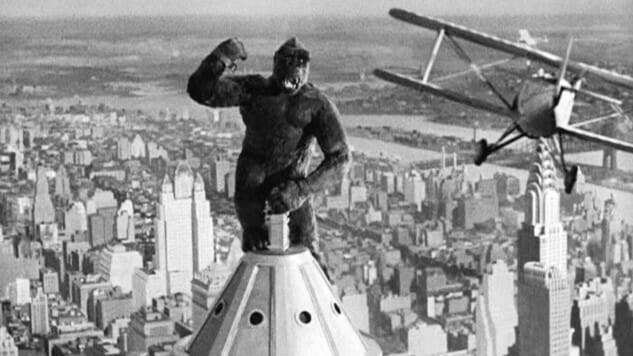The Best Horror Movie of 1933: King Kong

This post is part of Paste’s Century of Terror project, a countdown of the 100 best horror films of the last 100 years, culminating on Halloween. You can see the full list in the master document, which will collect each year’s individual film entry as it is posted.
The Year
The momentum of the early 1930s keeps rolling in 1933, as a variety of studios celebrate the newfound profitability of the horror genre. Thanks to King Kong, this is a formative year for the idea of the “giant monster” movie, which you can argue exists somewhere outside of horror—but we think it, along with its progeny, belongs here. Certainly, nearly every “creature feature” for the next several decades is deeply indebted to King Kong, and few come anywhere close to matching up with it.
In Germany, operating under the watchful eye of the Nazi party (which would later ban the film), Fritz Lang produced The Testament of Dr. Mabuse, his last German-language film before emigrating to France and then the U.S.A. A crime drama with touches of the supernatural, it continued the story he first told in the silent, Expressionist classic Dr. Mabuse the Gambler. In only his second sound film, Lang showed his ability to grow and thrive with the change in technology, opting for a more naturalistic (but still thrilling) visual style than his earlier Expressionist work. It was experience that would serve him well as he went on to direct numerous film noir classics in the U.S. throughout the 1940s and 1950s.
On the Universal side of the spectrum, 1933 is home to The Invisible Man, which always stands as one of the more underrated entries in the original Universal Monsters canon. Claude Rains delivers a classic performance as the imperious and haughty Dr. Jack Griffin, who is turned invisible by a botched science experiment and slowly descends into delusions of grandeur. Less focused on atmosphere and gothic frights than Dracula or Frankenstein, and somewhat less concerned with its melodramatic love story than The Mummy, The Invisible Man is more like a madcap crime caper with horror elements, thriving on Rains’ hilarious vocals and surprisingly emotive, almost vaudevillian performance while wrapped in yards and yards of bandages. It’s not among the scariest classic entries in the history of Universal Horror, but it’s absolutely one of the most purely entertaining.
1933 Honorable Mentions: The Invisible Man, The Testament of Dr. Mabuse, Mystery at the Wax Museum, The Ghoul
-

-

-

-

-

-

-

-

-

-

-

-

-

-

-

-

-

-

-

-

-

-

-

-

-

-

-

-

-

-

-

-

-

-

-

-

-

-

-

-








































